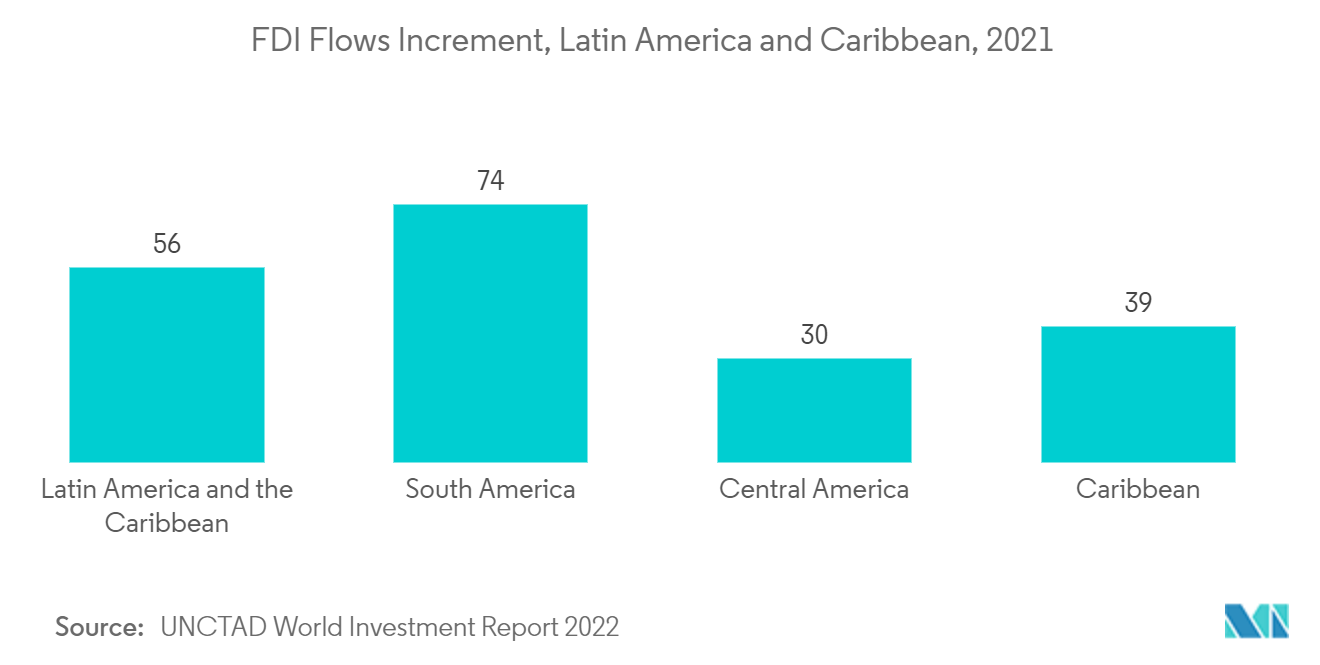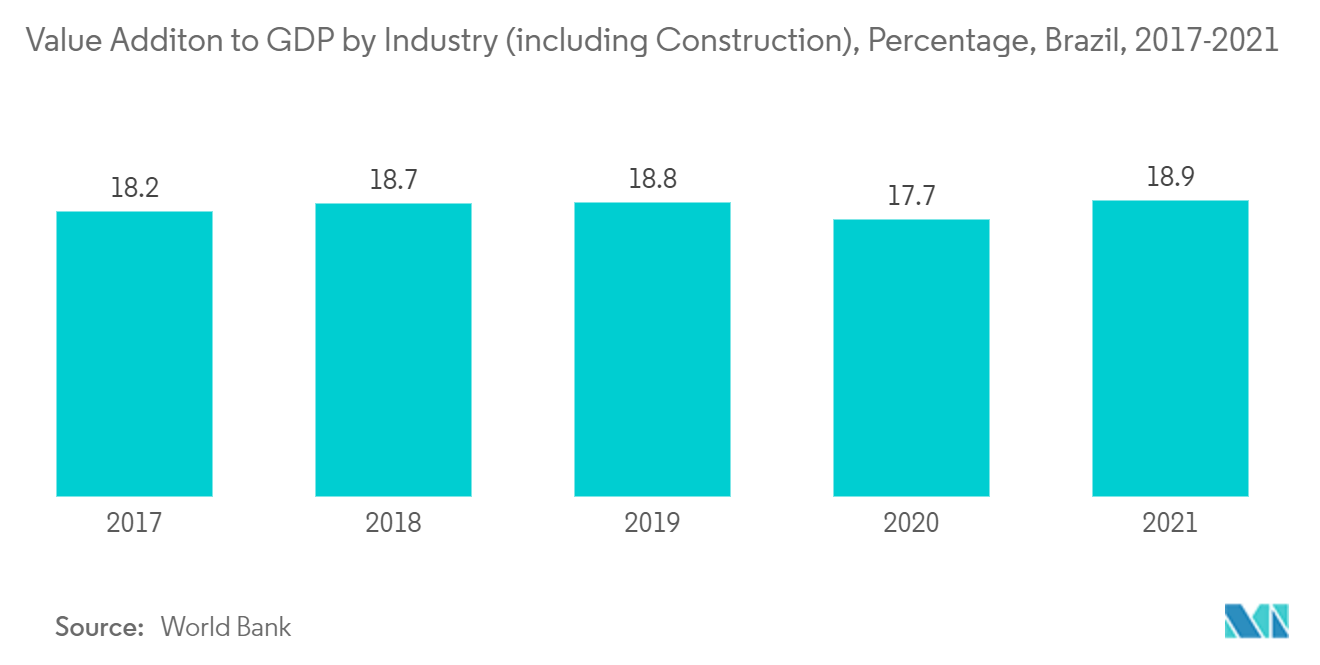Market Trends of South America Repair and Rehabilitation Industry
This section covers the major market trends shaping the South America Repair & Rehabilitation Market according to our research experts:
Growing Demand from Infrastructural Sector
- In the post-pandemic period, the construction industry in Brazil and Argentina was being supported by government funding giving the required boost to the economy to reach the pre-pandemic levels of development.
- In 2021, the FDI inflows increased significantly in South America as compared to neighboring regions such as Latin America, the Caribbean, and Central America.
- Furthermore, Colombia plans to speed up investments of USD 2 billion under the regional development program PDET over the next three years as part of the government's reactivation strategy. This program involves improving economic conditions in 170 municipalities that were heavily affected by the armed conflict with the FARC guerrilla. Investments will go to basic infrastructure, water, schools, and rural programs.
- Chile's construction industry witnessed a resurgence after several years of downfall. The increased foreign direct investment, owing to the country's new FDI policy, was the major factor driving the industry growth. The government is changing legislation to decrease bureaucracy and speed up authorization processes and qualifications in response to the severe economic impact of the COVID-19 pandemic. In this context, 138 private projects worth a total of USD 24.5 billion have been targeted for construction to begin by the end of 2021. The latest estimated infrastructure investment for the 2020-2024 period is USD 34.8 billion.
- Furthermore, Argentina initiated the green building movement. About 300 projects were registered in the country. Most of the green buildings are in Buenos Aires.
- These factors will lead to the growth of the repair and rehabilitation market in the South America region in the forecast period.

Brazil Dominate the Regional Market
- In Brazil, the construction sector accounts for more than 3.2% of the country's GDP. The country spends only 2% of its GDP on infrastructure, while the average percentage of GDP countries spend worldwide is around 4%.
- The construction projects did not shut down in most of Brazil's 27 states, including Rio de Janeiro, São Paulo, and Minas Gerais-its three largest economies. An estimated 88% of housing, infrastructure, and industrial building projects remain in progress, according to Brazil's Building Construction Syndicate. Measures of physical distance and hygiene were adapted at job sites.
- As per the latest Construction Industry Survey published by the National Confederation of Industry (CNI), in collaboration with the Brazilian Chamber of Construction Industry (CBIC), the construction activity index reached 50.1 in April 2022, which is the second consecutive month with a score above 50.
- Furthermore, the business confidence indicator (ICEI) in the country for the construction industry improved in the first 5 months of 2022, and rose to 56.2 in May 2022, which is up from scores of 55.5 in April and 55.3 in March 2022.
- The government further auctioned 44 infrastructure projects in 2020. Out of the 44 projects, 22 are airports conceded to the private sector. The government aimed to attract USD 24.6 billion in investments in these projects.
- These factors are likely to lead to an increase in size of the market studied in Brazil in the forecast period.


